近日了解到亨斯迈旗下有一款爱牢达AV119产品,主要是单组分热固化环氧胶粘剂,产品TDS我大概看了一下,应该与目前的红胶体系有些类似,但是有两个比较特殊的地方,一个是粘接强度非常大,另外一个是具有一定的韧性,可以承受高频的震荡冲击。据了解市面的价格好像是五六百块一公斤,而且这个产品也是按公斤来销售的,估计用量也不小。有空让公司研发部门分析一下此款产品,顺便也去了解一下此类产品的应用点。闲话少说,先贴上TDS资料,需要看原版的请下载附件查看!:
ARALDITE® AV 119 EPOXY ADHESIVE PASTE DESCRIPTION: Araldite AV 119 epoxy adhesive is a one-component, multi-purpose paste that is thixotropic and is designed for heat curing at temperatures from 248°F to 356°F (120°C to 180°C). The adhesive will fill gaps to 0.12 in. (3mm). The tough, high-strength adhesive is well suited for metal bonding and joining materials including ceramics, glass, rubber and temperature-resistant plastics. APPLICATIONS: Metal- to-metal bonding. ADVANTAGES: • Good heat resistance to 248°F (120°C) • Good peel strength • Good chemical resistance TYPICAL Test Values(1) PROPERTIES: Property Test Method One Component Epoxy Color Visual Beige Specific Gravity ASTM D-792 1.15 - 1.20 Viscosity at 77°F (25°C), cP Thixotropic paste PROCESSING Pretreatment The strength and durability of a bonded joint are dependant on proper treatment of the surfaces to be bonded. At a minimum, joint surfaces should be cleaned with a good degreasing agent such as acetone or other proprietary degreasing agents in order to remove all traces of oil, grease and dirt. Low grade alcohol, gasoline or paint thinners should never be used. The strongest and most durable joints are obtained by either mechanically abrading or chemically etching (“pickling”) the degreased surfaces. Abrading should be followed by a second degreasing treatment Adhesive Application The resin/hardener mix is applied with a spatula, to the pretreated and dry joint surfaces. A layer of adhesive 0.002 to 0.004 in. (0.05 to 0.10mm thick) will normally impart the greatest lap shear strength to the joint. The joint components should be assembled and clamped as soon as the adhesive has been applied. An even contact pressure throughout the joint area will ensure optimum cure. Mechanical processing Specialist firms have developed metering, mixing and spreading equipment that enables the bulk processing of adhesive. Huntsman Advanced Materials will be pleased to advise customers on the choice of equipment for their particular needs. Equipment maintenance All tools should be cleaned with hot water and soap before adhesives residues have had time to cure. The removal of cured residues is a difficult and timeconsuming operation. If solvents such as acetone are used for cleaning, operators should take the appropriate safety precautions and, in addition, avoid skin and eye contact. Curing times Temperature ° F (°C) 248 (120) 284 (140) 302 (150) 320 (160) 356 (180) Cure time minutes 60 45 30 20 10 Lap shear strength at 74°F (23°C) psi (N/mm2) 2900 – 3,335 (20-23) 3,625 – 4,060 (25-28) 3,915 – 4,350 (27-30) 4,205 – 4,640 (29-32) 4,350 – 4,785 (30-33) Note: Temperatures below 248°F (120°C) will not give adequate cure even when cure time is prolonged. Cure temperatures above 302°F (150°C) should be avoided when joining materials with different coefficients of linear thermal expansion because stresses will be set up in the bond line upon cooling. This effect is particularly marked where the bond surfaces are large. Typical cured properties Unless otherwise stated, the figures given below were determined by testing standard specimens made by lap-jointing 6.6 x 1.0 x 0.06 in.(170 x 25 x 1.5mm) strips of aluminum alloy. The joint area was 0.5 x 1.0 in. (12.5 x 25mm) in each case. The figures were determined with typical production batches using standard testing methods. They are provided solely as technical information and do not constitute a product specification. Average lap shear strengths of typical metal-to-metal joints (ISO 4587) Cured for 30 mins at 302°F (150°C) and tested at 74°F (23°C) Pretreatment - Sand blasting 0 725 1,450 2,175 2,900 3,625 4,350 5,075 Aluminum Steel 37/11 Stainless steel V4A Galvanized steel Copper Brass psi** * * * *Failure stress close to elastic limit yield stress of the metal. ** 725 psi = 5 N/mm2; 1,450psi = 10 N/mm2; 2,175 psi = 15 N/mm2; 2,900 psi = 20 N/mm2; 3,625 psi = 25 N/mm2; 4,350 psi = 30 N/mm2; 5,075 psi = 35 N/mm2 Lap shear strength versus temperature (ISO 4587) (typical average values) Cure:45 mins at 302°F (150°C) 0 1,450 2,900 4,350 5,800 -76 -40 -4 32 68 104 140 176 212 248 °F* psi** *-76°F = -60°C; -40°F = -40°C; -4°F = -20°C; 32°F = 0°C; 68°F = 20°C; 104°F = 40°C; 140°F = 60°C; 176°F = 80°C; 212°F = 100°C; 248°F = 100°C **1,450psi = 10 N/mm2; 2,900 psi = 20 N/mm2; 4,350 psi = 30 N/mm2; 5,800 psi = 40 N/mm2 Roller peel test (ISO 4578) Cured 30 mins at 150°C, pli (N/mm) 45.7 - 57.1 (8 - 10) Coefficient of thermal expansion (VDE 304), at 68°F-140°F (20°C-60°C) in./in./ºC 57x10-6 at 68°F-212°F (20°C-100°C) in./in./°C 68x10-6 Electrolytic corrosion (DIN 53489) Grade A 1 Electrical Properties Thermal Conductivity, W/mK 0.26 Surface Resistivity, ohms 3.5 E+13 Dielectric Strength, volt/mil 450 Volume Resistivity, ohms-cm 6.2 E+16 Dielectric Constant, at 50Hz/1KHz/10KHz 4.0/4.0/3.8 Loss Tangent, % at 50Hz/1KHz/10KHz 1.0/1.1/1.5 Lap shear strength after 90 days immersion in various media at 74°F (23°C), Typical average values. 0 725 1450 2175 2900 3625 4350 As-made value Methanol Gasoline Ethyl acetate Acetic acid, 10% Acetone Trichloroethylene Water at 74°F (23°C) Water at 194°F (90°C) psi* Cure: 30 mins at 302°F (150°C) * 725 psi = 5 N/mm2; 1,450psi = 10 N/mm2; 2,175 psi = 15 N/mm2; 2,900 psi = 20 N/mm2; 3,625 psi = 25 N/mm2; 4,350 psi = 30 N/mm2; Lap shear strength versus tropical weathering (40/92, DIN 50015; typical average values) Cured: 30 min at 302°F (150°C); Tested at 74°F (23°C) 0 725 1450 2175 2900 3625 4350 As made value After 30 days After 60 days After 90 days psi* * 725 psi = 5 N/mm2; 1,450psi = 10 N/mm2; 2,175 psi = 15 N/mm2; 2,900 psi = 20 N/mm2; 3,625 psi = 25 N/mm2; 4,350 psi = 30 N/mm2; Shear modulus (DIN 53445) Cure:30 min/302°F (150°C), Ksi (GPa) 77°F (25°C) 122°F (50°C) 167°F (75°C) 212°F (100°C) 257°F (125°C) 302°F (150°C) 203 (1.4) 188 (1.3) 160 (1.1) 102 (0.7) 44 (0.3) 2,175 psi (15 MPa) CAUTION: Huntsman Advanced Materials Americas Inc. maintains up–to-date Material Safety Data Sheets (MSDS) on all of its products. These sheets contain pertinent information that you may need to protect your employees and customers against any known health or safety hazards associated with our products. Users should review the latest MSDS to determine possible health hazards and appropriate precautions to implement prior to using this material. Copies of the latest MSDS may be requested by calling our customer service group at 800-367-8793 or emailing your request to adhesives_group@huntsman.com. FIRST AID! Eyes and skin: Flush eyes with water for 15 minutes. Contact a physician if irritation persists. Wash skin thoroughly with soap and water. Remove and wash contaminated clothing before reuse. Inhalation: Remove subject to fresh air. Swallowing: Dilute by giving water to drink and contact a physician promptly. Never give anything to drink to an unconscious person. KEEP OUT OF REACH OF CHILDREN FOR PROFESSIONAL AND INDUSTRIAL USE ONLY IMPORTANT LEGAL NOTICE: Sales of a referenced product (“Product”) are subject to the general terms and conditions of sale of Huntsman Advanced Materials Americas Inc. (“Huntsman”). WARRANTY: Huntsman warrants to the Buyer that the Product will conform to the published specifications for that Product at the time of manufacture, and that the Product will be free from defects in material and workmanship in normal use. DISCLAIMER AND LIMITATION OF LIABILITY: EXCEPT AS SET FORTH ABOVE, SELLER MAKES NO WARRANTY OR REPRESENTATION, EXPRESS OR IMPLIED, INCLUDING WARRANTIES OF MERCHANTABILITY AND FITNESS FOR A PARTICULAR PURPOSE. Huntsman cannot control Buyer’s application and use of the Product and accepts no responsibility therefore. No statement or recommendation contained in any Product literature may be construed as a representation about the suitability of a Product for the particular application of Buyer or user or as an inducement to infringe any relevant patent. Buyer is responsible to ensure that its intended use of the Product does not infringe any thirdparty’s intellectual property rights. Seller neither assumes, nor authorizes any representative or other person to assume for it, any obligation or liability other than as is expressly set forth herein. UNDER NO CIRCUMSTANCES SHALL HUNTSMAN BE LIABLE FOR INCIDENTAL, CONSEQUENTIAL, SPECIAL OR OTHER INDIRECT DAMAGES AS A RESULT OF A BREACH OF ANY WARRANTY OR THE FAILURE OF A PRODUCT OR ANY CLAIM THAT IS ESSENTIALLY BASED UPON SUCH BREACH OR FAILURE. Any claim by Buyer, whether arising in contract, tort, negligence, breach of warranty, strict liability, or otherwise, related to a Product shall be limited to, and the sole liability of Seller and the sole remedy of Buyer for any claims shall be for, the purchase price of the Product in respect of which such claim is made. The foregoing DISCLAIMER and LIMITATION OF LIABILITY supercedes Buyer’s documents. WARNING: Technical data and results are based upon tests under controlled laboratory conditions and must be confirmed by Buyer by testing for its intended conditions of use. The Product has not been tested for, and therefore is not recommended or suitable for, uses for which prolonged contact with mucous membranes, abraded skin, or blood is intended or likely, or for uses for which implantation within the human body is intended, and Huntsman assumes no liability for any such uses. © 2004 Huntsman Advanced Materials Americas Inc. Araldite is a registered trademark of Huntsman LLC or an affiliate thereof in one or more, but not all, countries.
点击下载附件查看TDS资料:
TDS-A119(US).pdf (159.6 KB, 9 次)
您没有权限下载此文件。


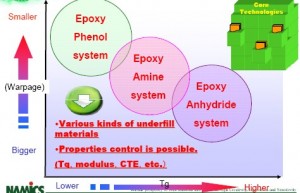
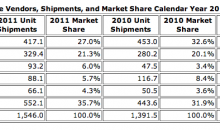
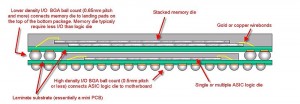
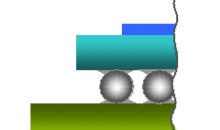
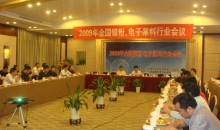
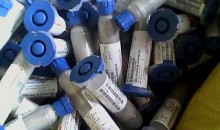
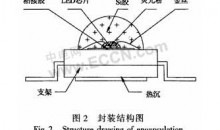
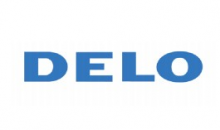
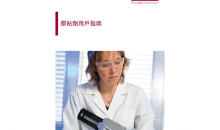
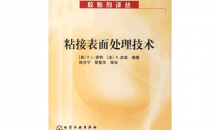
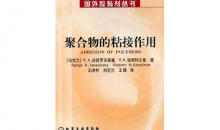
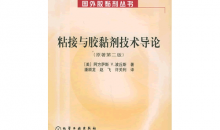



《【扒一扒】日本高纯球形硅微粉材料生产商》: 作为一种无机非金属矿物功能性粉体材料,硅微粉广泛应用于电子材料、电工绝缘材料、胶黏剂、特种陶瓷、精密铸造、油漆涂料、油墨、硅橡胶等领域。 目前,世界上只有中国、日本、韩国、美国等少数国家具备硅微粉生产能力... 全文 ?